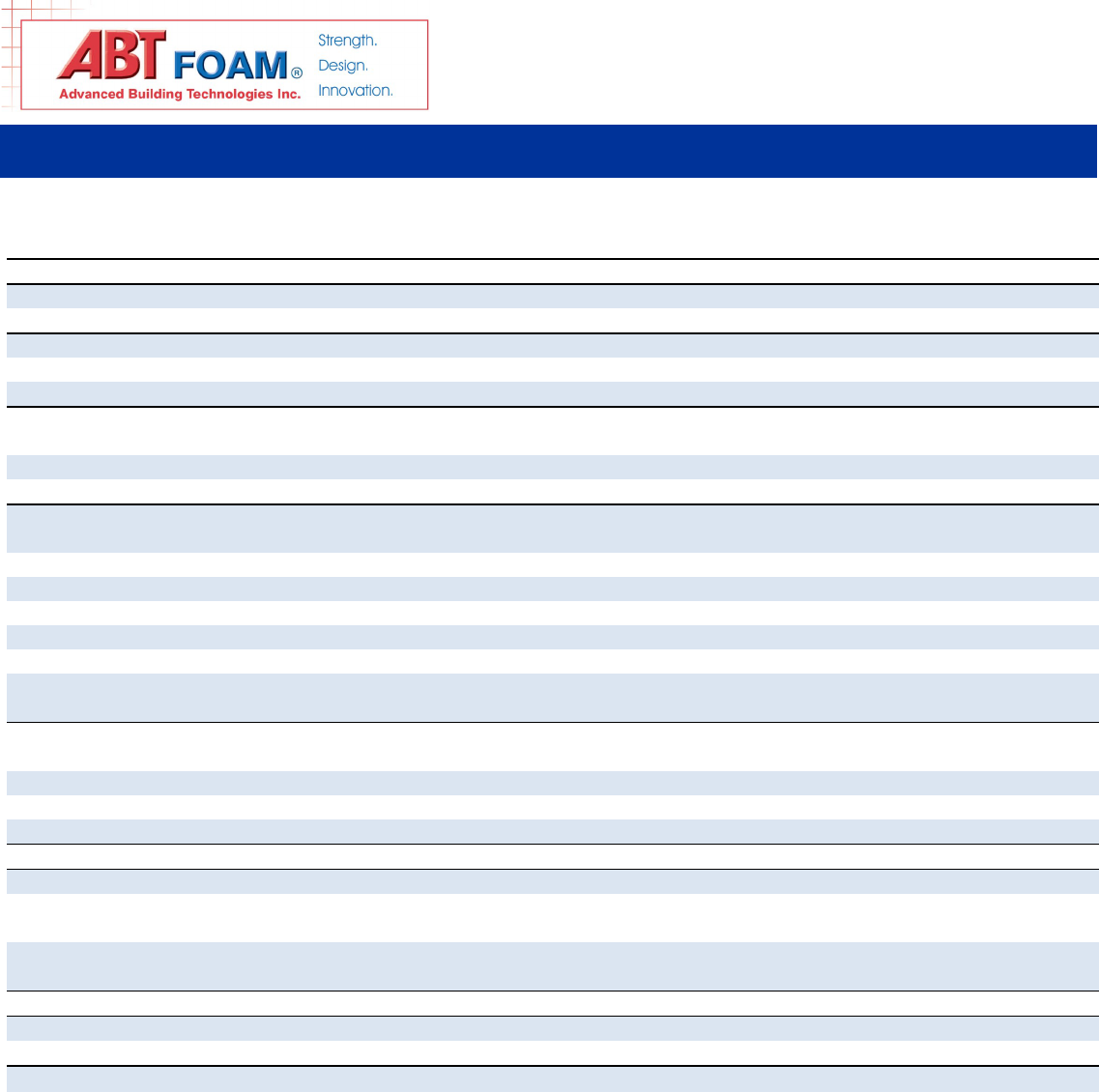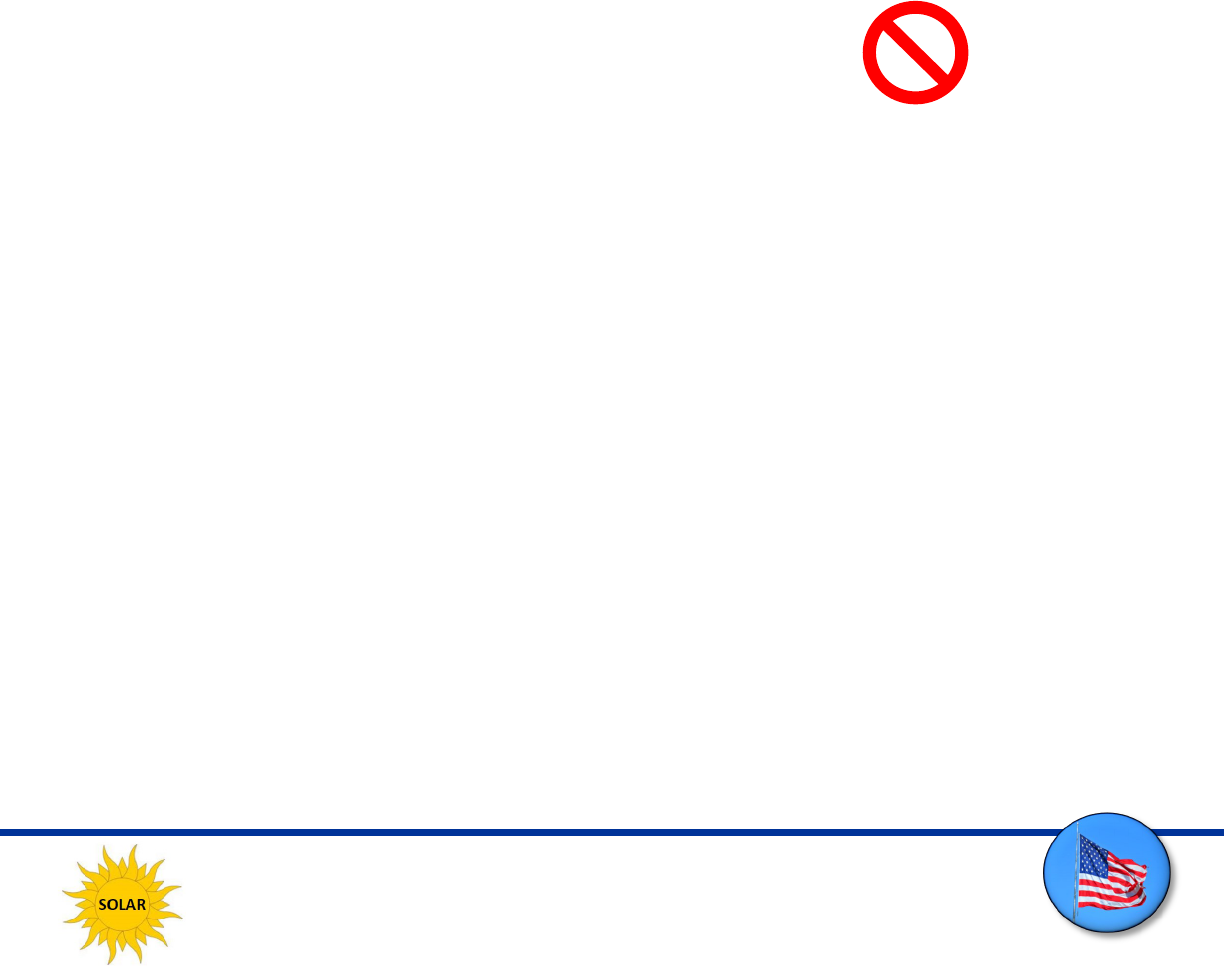
1
Typical Physical Properes Of Expanded Polystyrene (EPS)
Specicaon Reference: ASTM C578
1.0# Density 1.25# Density 1.5# Density 2.0# Density
Property Units ASTM Test Type XI Type I Type VIII Type II Type IX
Density, Min. (pcf) D 303 or D 1622 0.75 0.9 1.15 1.35 1.8
Density Range 0.70 0.90-1.14 1.15-1.34 1.35-1.79 1.80-2.20
Thermal Conduct. at 25 F BTU/(hr.) C177 or C518 0.23 0.22 0.21 0.20
K Factor at 40 F (sq. Ft.)(F/in.) 0.24 0.235 0.22 0.21
at 75 F 0.26 0.255 0.24 0.23
Thermal Resistance at 25 F 4.35 4.54 4.76 5.00
R-Value* at 40 F 3.30 - 3.43 4.0 - 4.17 4.20 - 4.25 4.40 - 4.55 4.60 - 4.76
at 75 F 3.10 - 3.22 3.6 - 3.85 3.9 - 3.92 4.0 - 4.17 4.20 - 4.35
Strength Properes
Compressive 10% Deformaon psi D 1621 5.0 10. - 14 13 - 18 15 - 21 25 - 33
Flexural psi C 203 10.0 25 - 30 30 - 38 40 - 50 50 - 75
Tensile psi D 1623 16 - 20 17 - 21 18 - 22 23 - 27
Shear psi D 723 18 - 22 23 - 25 26 - 32 33 - 37
Shear Modulus psi 280 - 320 370 - 410 460 - 500 600 - 640
Modulus of Elascity psi 180 - 220 250 - 310 320 - 360 460 - 500
Moisture Resistance
WVT perm. In. E 96 5.0 2.0 - 5.0 1.5 - 3.5 1.0 - 3.5 0.6 - 2.0
Absorpon (vol.) % C 272 4.0 less than 4.0 less than 3.0 less than 3.0 less than 2.0
Capillarity none none none none
Coecient of Thermal Expansion in./(in.)(F) D 696 0.000035 0.000035 0.000035 0.000035
Maximum Service Temperature Deg. F
Long-term Exposure 167 167 167 167 167
Intermient Exposure 180 180 180 180 180
Oxygen Index % 24.0 24.0 24.0 24.0 24.0
Flame Spread less than 25 less than 25 less than 25 less than 25 less than 25
Smoke Developed less than 450 less than 450 less than 450 less than 450 less than 450
Physical Properes chart is reprinted with the permission by The Society of the Plascs Industry, Inc.
Cauon: Expanded Polystyrene (EPS) contains a ame retardant. However, it should be considered ammable and should not be ex-
posed to any source of combuson. EPS insulaon should be covered with a thermal barrier or otherwise installed in accordance with
applicable building code requirements.
Solvent Aack: EPS is subject to aack by petroleum based solvents. Care should be taken to prevent contact between EPS and these
solvents or their vapors.
Storage: EPS foam products must be stored at on the original shipping runners, pallet or cartons. The material must be elevated above
oor or ground level. If stored outdoors, must be covered with UV and waterproof covering. Do not store close to open ame.
Ultraviolet Degradaon: Prolonged exposure to sunlight will cause slight discoloraon and surface dusng of EPS insulaon. The insu-
lang properes will not be signicantly aected under normal usage. EPS stored outside should be protected with a light-colored
opaque tarpaulin.

2
EPS FOAM INSULATION
Expanded polystyrene (EPS) is a closed cell, light weight, resilient
foamed plasc insulaon. EPS is able to withstand the abuse of
temperature cycling and assuring long term performance. EPS has
been an innovave building material since the 1950’s and is recog-
nized as a mainstream insulaon and building material. EPS is an
ideal choice for green building designs, oering environmental
advantages that can maximize energy eciency.
EPS foam insulaon is manufactured in accordance with ASTM
C578. EPS is manufactured in a wide range of densies from the
lower cost eecve 1.0# (0.90 pcf density) and up to the high
performance 2.0# (1.8 pcf density) meeng the demands of the
roong industry.
TEMPERATURE CYCLING
EPS is able to withstand the riggers of temperature cycling assur-
ing long term performance. In a series of tests, conducted by the
Dynatech Research Development Co., Cambridge, MA, core speci-
mens removed from exisng freezer walls, some as old as 16
years , demonstrates EPS withstands freeze-thaw cycling without
loss of structural integrity or other physical properes.
LONG TERM INSULATION VALUE
R-value means the resistance to heat ow. The higher the R-
value the greater the resistance to heat ow. The thermal perfor-
mance of EPS insulaon, as with any insulaon product, depends
upon the correct installaon using good building pracce. When
properly installed, the R-value of EPS insulaon remains constant
for the life of the applicaon. This is because the closed cell
structure of EPS only contains air. As a result, the R-value of EPS
insulaon provided for each product type may be used as a de-
sign value without any adjustment for age.
EPS ENVIRONMENTAL IMPACT
EPS insulaon is an inert, organic material produced from petro-
leum and natural gas by-products. EPS insulaon does not con-
tain CFC’s, HCFC’s, adhesives or formaldehyde. EPS foam insula-
on provides no nutrive value to plants, animals, or micro-
organisms. It will not rot and is highly resistant to mildew and
mold resistant (Tested in accordance with ASTM C1338
“Standard Test Method for Determining Fungi Resistance of Insu-
laon Materials and Facings.
ABT Foam
1405 Industrial Drive ● Statesville, NC 28625
Phone 704-873-9081 ● Toll Free 866-634-6057 ● Fax 704-873-908
www.aboam.com
Made in USA
“DISCLAIMER: The customer and the customer’s architects, engineers, consultants and other professionals are completely responsible for the selection, installation, and mainte-
nance of any product purchased from ABT FOAM, LLC., and EXCEPT AS EXPRESSLY PROVIDED IN ABT FOA’S STANDARD WARRANTIES, ABT FOAM MAKES NO WAR-
RANTY, EXPRESS OR IMPLIED, AS TO THE SUITABILITY, DESIGN, MERCHANTABILITY, OR FITNESS OF THE PRODUCT FOR CUSTOMER’S APPLICATION. Copies of ABT
FOAM’S standard warranties are available upon request.”
ABT FOAM’S Trade Mark Products: Advanced Wrap™, DropSide™ and PreFur™
NO CFCs
No Ozone Depleng CFCs
